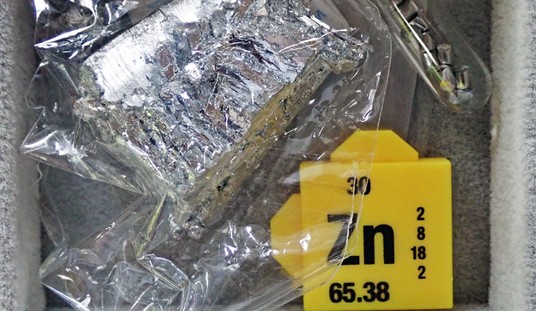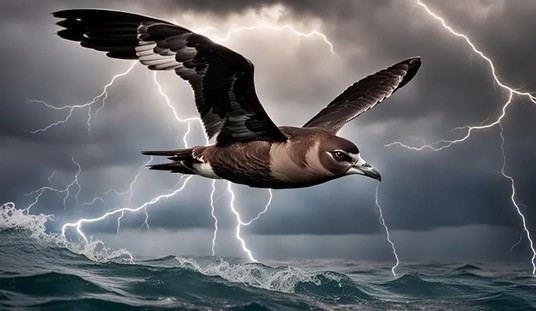Alaska has been in the news frequently lately, with nearly all coverage focusing on energy and mineral extraction issues. That's understandable. These are issues that almost nobody in the country is ambiguous about right now. The climate scolds and urban environmentalists want to keep Alaska as a giant national park, while the energy sector and, almost certainly, a majority of consumers would like to see cheaper energy and less dependence on other nations for strategic minerals.
The Great Land, however, also has a storied history. And if you're interested in the wildlife of Alaska, one name stands out, because his name appears on so many of the Great Land's species: Georg Wilhelm Steller.
It's an interesting story for a man born in Germany.
Georg Wilhelm Steller was born in 1709 in a town near Nuremberg. He didn't remain there long, though. His original family name was Stöhler, but he later changed it to Steller to more closely approximate the Russian pronunciation. Why would he do this? Because, after studying theology and medicine at the University of Wittenberg, he joined the Russian Academy of Sciences as a physician. That was in 1734.
After hearing the tales of Vitus Bering's exploration of the Kamchatka Peninsula, Steller applied to join the second expedition and was accepted. He set forth from St. Petersburg in 1738, bound east, although his wife stayed behind in Moscow, travel in Russia in winter being an unpleasant undertaking in those days. Departing in 1740, the expedition sailed to Kamchatka and spent the winter ashore in the town of Bolsherechye. Come spring, Vitus Bering summoned Steller to set out for America. This was where Steller's name would become memorialized.
They arrived in Alaska, on Kayak Island, in July of 1741. Bering wanted to stay only long enough to take on water, but Steller here started his career in natural history by becoming (almost certainly) the first non-native to set foot on Alaskan soil. So the first white man to set foot in Alaska was not a Russian, as many might think, but a German. Steller was also savvy enough to treat the Russian crew's scurvy with plants and berries he had gathered, but most of the crew refused. Steller and his assistant, as a result, were the only two members of the party who did not suffer from the malady.
While seeking the mainland, the sickened crew were shipwrecked on what is now Bering Island. Almost half the crew were dead from scurvy, including Vitus Bering. Eventually, they built a new ship from the wreckage of the old and made if back to Russia. Steller explored much of the Kamchatka Peninsula after that, but died of a fever while traveling back to St. Petersburg.
Georg Steller directly discovered six species in Alaska and the Kamchatka Peninsula. Two are extinct: The Steller's Sea Cow and the Spectacled Cormorant. Three are, today, considered threatened: The Steller's Sea Lion, the Steller's Eider, and the Steller's Sea Eagle. The sixth, the Steller's Jay, remains a common bird in western North America, from the Alaska panhandle to the Mexican border.
Sir Alfred Lord Tennyson is rumored to have been writing about the Steller's Sea Eagle in his famous poem, "The Eagle":
He clasps the crag with crooked hands;
Close to the sun in lonely lands,
Ring'd with the azure world, he stands.
The wrinkled sea beneath him crawls;
He watches from his mountain walls,
And like a thunderbolt he falls.
Consider the voyages of his young man. In only 37 years, he traveled from Germany to far eastern Russia, then joined in a horrendously risky voyage in what was almost certainly a ramshackle Russian ship of the kind called a "shitik," a small flat-bottomed boat with a single mast. The waters of the Bering Strait are risky now, in modern ships with well-equipped crews. Imagine crossing them in a wooden boat in the early 1700s, decades before the United States was even a thought, when people living in the 13 colonies considered themselves English.
Read More: This Is Big: Trump Approves Key Alaska Mining Road
Big: House Votes to Open 3 Million Acres of Alaska for Oil, Gas, Mining
Alaska's history is full of such tales. The original Russian explorers were brave and determined as well, and even today, the onion spires of Russian Orthodox churches are found scattered through the panhandle and southern Alaska, and many place names are Russian, including one of the great rivers for which our borough is named: The Matanuska. But Steller, while he never explored the mainland, nevertheless was one of the first naturalists to set foot in Alaska. He was one of the first men from the Old World to come to Alaska with any interest in the local wildlife other than eating it or taking its fur, and the names of Alaska's wildlife species reflect that.
The complete list of animal species bearing Steller's name includes:
- Steller's eider (Polysticta stelleri)
- Steller's jay (Cyanocitta stelleri)
- Steller's sea eagle (Haliaeetus pelagicus)
- Short-tailed albatross or Steller's albatross (Phoebastria albatrus)
- Steller's sea cow (Hydrodamalis gigas)
- Steller sea lion (Eumetopias jubatus)
- Steller's sculpin (Myoxocephalus stelleri)
There's even a mineral bearing Steller's name - Stellerite. There is a Steller Secondary School in Anchorage, and Mt. Steller, at the far east end of the Chugach Range.
Georg Wilhelm Steller was an explorer, an adventurer, and a scientist when being a scientist wasn't really an occupation one chose. His name, rightly so, lives on here, in the Great Land, another part of this state's magnificent history.














